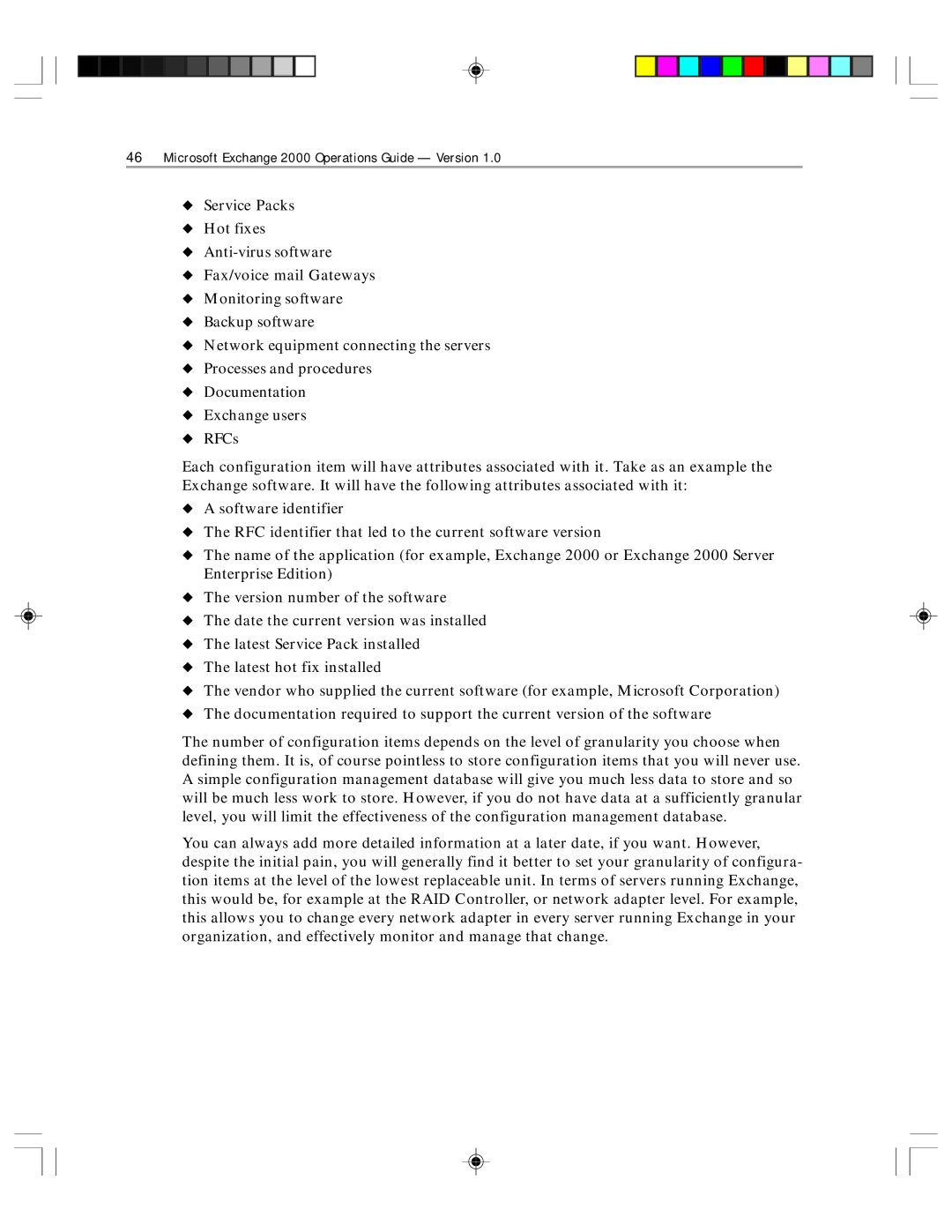
46Microsoft Exchange 2000 Operations Guide — Version 1.0
◆Service Packs
◆Hot fixes
◆
◆Fax/voice mail Gateways
◆Monitoring software
◆Backup software
◆Network equipment connecting the servers
◆Processes and procedures
◆Documentation
◆Exchange users
◆RFCs
Each configuration item will have attributes associated with it. Take as an example the Exchange software. It will have the following attributes associated with it:
◆A software identifier
◆The RFC identifier that led to the current software version
◆The name of the application (for example, Exchange 2000 or Exchange 2000 Server Enterprise Edition)
◆The version number of the software
◆The date the current version was installed
◆The latest Service Pack installed
◆The latest hot fix installed
◆The vendor who supplied the current software (for example, Microsoft Corporation)
◆The documentation required to support the current version of the software
The number of configuration items depends on the level of granularity you choose when defining them. It is, of course pointless to store configuration items that you will never use. A simple configuration management database will give you much less data to store and so will be much less work to store. However, if you do not have data at a sufficiently granular level, you will limit the effectiveness of the configuration management database.
You can always add more detailed information at a later date, if you want. However, despite the initial pain, you will generally find it better to set your granularity of configura- tion items at the level of the lowest replaceable unit. In terms of servers running Exchange, this would be, for example at the RAID Controller, or network adapter level. For example, this allows you to change every network adapter in every server running Exchange in your organization, and effectively monitor and manage that change.
